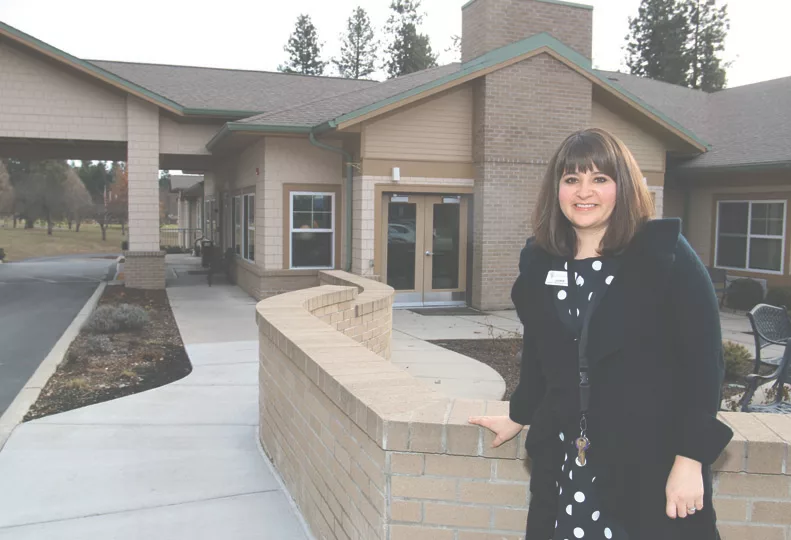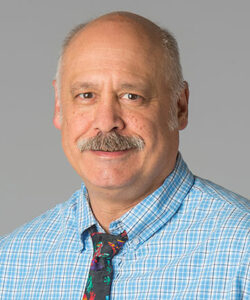Cd'A retirement complex gives nod to its roots
Faith-based community rebrands as it looks toward next century

The Village at Orchard Ridge, formerly Coeur d’Alene Senior Living, has taken on a new name as its operators look forward to guiding it into its second century of service.
The faith-based retirement community’s independent-living complex, The Grove, and its neighboring assisted-living facility, The Garden, formerly Heritage Place Inc. and Coeur d’Alene Homes Inc., respectively, also are freshly renamed, says Jamie Anderson, marketing and development director at Orchard Ridge.
The rebranding for the Coeur d’Alene area’s longest continually running retirement community was launched this winter, and new exterior signage will be installed soon, Anderson says.
She adds that occupancy rate at both facilities usually is near capacity, and Orchard Ridge is looking to expand at some point in the next several years.
The 12-acre campus overlooking the Spokane River near the southeast corner of Northwest Boulevard and U.S. 95 in west central Coeur d’Alene is operated by a nonprofit supported by 22 mostly North Idaho churches.
The Grove, a three-story complex of three connected structures, at 702 W. Walnut in Coeur d’Alene, has 154 independent-living apartments, with five units available earlier this month.
The Garden, located at 624 W. Harrison, has two floors with a total of 69 residents’ rooms, with three rooms available earlier this month.
“We’re almost full,” Anderson says of The Garden. “We have 67 residents, including three couples.”
The retirement community has a total of 85 employees, including two nurses. Orchard Ridge offers a scholarship program for caregivers to become certified nursing assistants, she says.
“We just put three caregivers through CNA training,” Anderson says.
The training promotes employee satisfaction and retention, she says.
“Most of the staff has been here longer than me,” says Anderson, a four-year employee at the senior-living community.
Residents typically are from North Idaho, and new residents often are referred through member churches.
Many residents were volunteers at the retirement community before they were residents.
“They know us well,” she says. “We usually don’t have trouble finding new residents.”
Volunteers logged more than 1,900 total hours last year, Anderson says. Volunteer services include visitations and outings with residents, leading or participating in group activities, gardening, and entertaining.
Orchard Ridge accepts a limited number of Medicaid residents, she says.
The Garden relies on grants, sponsorships, and donations to fill the annual $500,000-plus gap between Medicaid underfunding and the actual cost of care, she says.
Orchard Ridge also operates a thrift store, Orchard Vintage Goods, at 501 E. Lakeside, in downtown Coeur d’Alene. Sales benefit The Garden.
The Garden is constructed so all rooms have some type of a view, Anderson says. Exterior-facing rooms overlook the campus grounds. Interior rooms overlook a courtyard lined with dogwood trees.
Common areas in the interior include smaller activity, social, and dining spaces.
“We try to create areas for residents to relax outside of their rooms,” Anderson says.
The Garden also has an activity schedule that typically offers residents the option to participate in up to five or six activities a day, including exercise sessions, mental stimulation games, worship services, and entertainment.
“Tuesday’s highlight is singing and dancing,” Anderson says.
One of the distinctive features at The Garden is its large serenity garden, an outdoor sanctuary that’s specially designed to accommodate people with Alzheimer’s and dementia conditions.
“There are no hard edges or stops,” Anderson says of the connected, looping garden paths that encourage residents to explore at their leisure without fear of becoming lost.
In the spring and summer, the serenity garden gets heavy use.
“All plants are meant to be touched and smelled and to engage the residents,” Anderson says.
The top floor of the two-story Garden facility is called the Terrace to distinguish it from The Garden’s main floor memory-care unit. The Terrace floor of the Garden includes 320-square-foot studio apartments and 510-square-foot one-bedroom units.
Monthly assisted-living rates range from $4,200 to $5,800, depending on the type of room and the level of care the residents receive.
On the memory-care floor, the typical size for private rooms is 310 square feet. Semiprivate rooms typically have 260 square feet of living space per bed. Monthly memory-care rates range from $4,600 to $6,300 a month, depending on the level of care and type of room.
Assisted-living services include full-time nursing staff on weekdays; medication assistance and 24-hour health monitoring; bathing, dressing and personal care assistance; coordination of in-house doctor, lab, and therapist visits; and coordination of and transportation to medical and dental appointments.
Other amenities include laundry and housekeeping services, supervised activities, social programs, exercise groups, brain wellness classes, escorts to meals and activities, worship services, and Bible studies.
The Grove, which Orchard Ridge touts as an affordable independent-living complex, is a U.S. Department of Housing and Urban Development-subsidized facility restricted to low-income seniors over 62 years of age.
Rent is one-third of income after medical expenses for qualified residents, with HUD reimbursing the difference between the residents’ ability to pay and market rents.
Preference is given to those with annual income of 30 percent or less than the median area income, which is $11,750 for singles or $15,730 for couples.
Residents in some units that don’t come with full kitchens are required to purchase a $239 monthly meal plan for one daily meal.
The Grove offers one-bedroom, pet-friendly apartments with emergency communications systems, individually controlled heating and air conditioning, and walk-in showers.
Common areas include an elegant dining room, a large lobby, lounges, an activity room, an exercise room, and covered parking.
Two buildings in the Grove were built in 1979. The third was constructed in 2003.
Past and future
The Village at Orchard Ridge gets its name from a grove of fruit trees originally planted in 1921. The stand of fruit trees is one of the few remaining features from the retirement community’s early days. The orchard has seven producing apple trees, one plum tree, and a cherry tree, Anderson says.
Fruit is used in the senior community’s kitchens when in season.
“We sell apple butter as a fundraiser,” Anderson says.
At one time, the facility had a substantial vegetable garden that residents nurtured.
It helped them get through the Depression, Anderson says. There was no lack of knowledge among residents who tended the crops back then.
Many early residents were retired farmers who had sold their farms to live their remaining days at the retirement community, Anderson says.
Before becoming a retirement community 94 years ago, the grounds were briefly the home of Swedish College.
That school closed for lack of students during World War I, Anderson says, and the Trinity Lutheran Church bought it in 1921 and opened it as a nursing home and orphanage.
The current assisted-living facility was built in 2006, replacing a four-story brick building that stands vacant on the campus.
“We’re told it can’t be rehabilitated,” she says of the older building.
Orchard Ridge is in early stages of planning an independent-living tower that would expand the senior-living community’s capacity, and would be built where the brick building now stands, Anderson says.
“We aren’t as big as we could be,” she says.
The tower is in the early concept stage and there’s no estimate yet of how big it would be, Anderson says. “We’re still working it out.”
The tower likely wouldn’t be restricted to low-income residents, she says.
“We’ve found if there’s a couple, one might need assisted living and one might not,” she says. “We’re trying to bridge that gap so non-low-income, independent people can live here.”
The next major project on Orchard Ridge’s agenda, though, likely would include constructing a chapel in the middle of the campus, Anderson says.
“We want to honor the history and why residents live here,” she says.
The chapel, which also is still in the early concept stage, likely won’t be constructed for at least five years, she says.
Perhaps further into the future, the Orchard Ridge campus will include independent-living cottages, Anderson says.
“When we see a need, we want to fill that need,” she says.
Related Articles
Related Products


_c.webp?t=1763626051)


